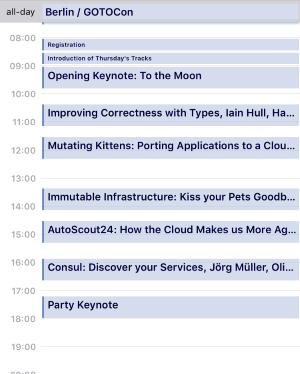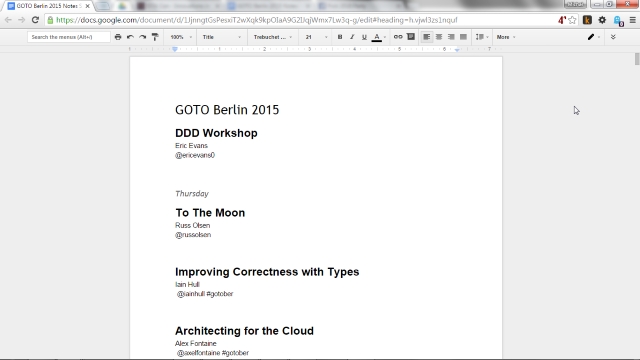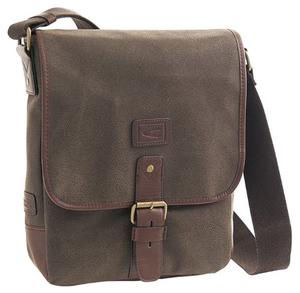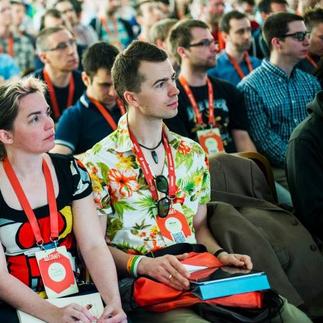It’s not unusual for conferences to cost an arm and a leg. At €1,000 or more for just the entry, on top of which come travel and accommodation, and I often attend two or three events a year. That’s a pile of money in need of justification spending, and I can only do so if I bring back lots of valuable information. Here’s what I do nowadays—the tools and tricks I worked out for surviving and thriving as a conference attendee.
Preparation
During a conference I want to focus strictly on acquiring information and connecting with other attendees, so to free up time I prepare a lot upfront.
Session selection comes first. Conference schedules usually appear piece by piece, so a week or two before the event I go through all sessions and plan my agenda. The last thing I want is to make haphazard, effectively random decisions at the venue.
- If I’m attending with any colleagues, we sit down together to split up the sessions and cover more ground.
- If there’s more than one interesting session in a given time slot, I write down all of them and prioritize. This way I have more options when my first choice turns out to be a flop or suddenly gets canceled.
I add selected sessions into Google Calendar, synchronized across all of my devices. Some conferences have dedicated apps to store one’s schedule, but these may or may not work to my liking or could have issues on shaky Wi-Fi. Plus I quickly would’ve acquired a pile of useless apps and accounts.

I’m really big on notes. Before the conference I setup a fresh Google Doc, since I’ll be taking notes on a tablet, with pre-entered:
- sections for each chosen session, ordered chronologically,
- names and
- Twitter handles of speakers.

Using Google Docs has a number of advantages:
- I can share the document with colleagues, both at the venue or back at the office, where they can follow me in real-time,
- Google Docs’ context-aware spellchecker is pretty decent, which helps a lot when (mis)typing on a tablet,
- the chronological order lets me get ready quickly by opening the document and scrolling down to the next empty section,
- speakers’ Twitter handles make live tweeting easier.
I’ll often write the Twitter handles with the conference hashtags, ie.:
@mpaluchowski #craftconf
Note the leading space. This snippet I can easily copy and paste after every quote I tweet during a session.
D-Day(s)
The conference days are always intense, both physically as well as mentally, so my focus here is to stay light and fit.
I carry my own shoulder bag, currently the excellent Camel Active Dakar, which contains my tablet, wallet, business cards and a pen or two.

Conferences usually hand out their own bags, but most of these aren’t convenient to carry around for a full day. I carefully selected a good bag, that:
- keeps my hands free all day—especially beneficial at standing lunches,
- doesn’t bite into my shoulder(s),
- doesn’t bump around my hip thanks to its vertical orientation,
- easily fits into my lap during a session, when space is tight,
- carries everything I need—the Camel one can easily carry a 12" laptop or A4-sized documents.

My device for note taking is currently the iPad Air 2. A laptop wouldn’t do because the vast majority won’t last a full day on batteries and I sure as hell don’t want to waste time on recharging.
Typing on a tablet is pretty cumbersome, but gets better with practice, plus Google Docs’ spellchecker helps a lot, and anyway I won’t be publishing raw notes anywhere without post-processing. A colleague is happy doing notes on an iPad Mini so the smaller form factor could work as well.
iOS 9’s Peek function was a real blessing, since I tweet a lot during sessions, on top of taking notes. Earlier I had to keep switching between the Google Docs and Twitter apps, whereas now I can just slide in Twitter on the side for a quick tweet and return to notes. Thanks, Apple!
A conference day is really hard for the body since I spend a lot of time sitting still in sessions, while my brain keeps working in high gear, burning lots of fuel and not getting nearly enough oxygen to clean up the trash from metabolism. This means unless I pay attention to my body, by the end of day I’ll likely develop a headache and won’t see much from the conference party. So I:
- drink a lot of water, either carry my own bottle and keep sipping during sessions, or drink a glass at each break. The side effect is having to visit the bathroom often, but there’s a trick to that too.
- move a lot in between sessions—no sitting, lots of walking, gesticulation, even leaving the venue when possible.
- eat light, opting for complex fuel sources, like protein or complex carbohydrates. No pastry or sweets of any kind—these would burn up quickly leaving me hungry and distracted.
Finally, I try to sit near convenient exit rows, so that I can easily leave the session if I don’t like it, or reach the toilet before the crowd does. Trust me, this is a real problem during male-dominated software events.
Post-processing
There’s little value in all the information I acquire at a conference if it stays inside my head. Sharing it with others and turning it into action is where the payoff starts.
Conferences are often followed by a weekend, which is super convenient since I can focus on something completely different and then go back to my notes with a fresh look on Monday morning.
It takes me a day or so to process notes, where I rearrange them to:
- group into common themes, ie. microservices, DDD, Agile etc.,
- reorder into something that makes sense in the context, rather than whatever the speaker(s) thought would,
- list out tools, books, blog posts and other resources I saw mentioned,
- later add links to talk recordings, once they were posted.
Finally, I produce a brief summary from the pile of information, adding my own judgment of where I see the industry right now, or how it changed compared with previous conferences. This usually turns into a blog post, richly decorated with photos and tweets from the event.
We take a look at all materials with my colleagues to decide what is most relevant to us and what we’d like to try out now or later. These go into our regular planning and I get back to everyday work, counting down to the next great conference.
*[DDD]: Domain-Driven Design